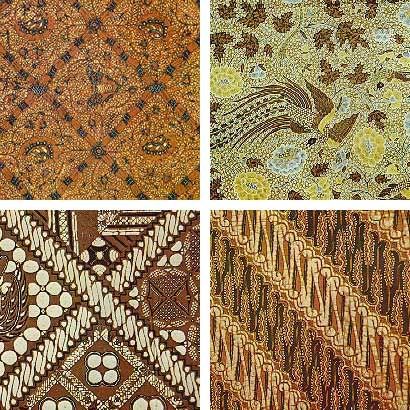The batik textile prints of Indonesia are famous throughout the world for their beautifully intricate patterns, delicate designs and warm colors. Distinctly Indonesian, batik was declared as ‘intangible cultural heritage of humanity’ by UNESCO in 2009.
Pekalongan is a city famous for its distinctive north coast batik. Pekalongan is a small city on the northern coast of Central Java, around 100 kilometers west of Semarang. The batik produced by the skilled artisans here is instantly recognizable as the unique patterns and bright colors reflect multi-cultural influences from Chinese, Dutch, Malay, Japan, the Indies and Arab nations. The beauty of batik made in Pekaolongan has been recognized throughout the world. Batik is exported from here to Australia, the United States, the Middle East, Japanese, Korea, China and Singapore.
Batik is an integral part of Indonesia’s cultural heritage. It is generally divided into two main groups, coastal batik from the north coast of Java and the court batik from Yogyakarta and Solo. Batik from the north coast of Java (Pekalongan, Cirebon, Lasem) reflects the long standing foreign influence on this area. Batik prints from this region displays different influences of Arabic calligraphy and European florals to Japanese cherry blossoms and Persian peacocks. The colors of this batik tend to be more bright and varied in color, decorated in yellows, ocher, pinks, mauve and blue.
Batik comes in many forms. Anything from brightly colored floral prints to birds, leaves and butterflies in flamboyant hues can decorate a batik cloth. Batik is more than just a piece of material though. Each design has a symbolic meaning and plays an important role in social and cultural rituals.
With over 2,500 batik motifs found throughout the country, Indonesian batik is remarkably diverse. This is a highly developed art tradition. Originally used in the courts of Java, batik has since become a symbol of national identity, embraced by all regions whatever their ethnic origins. Patterns vary enormously from one region to another with each print reflecting the individual characteristics, spirituality and creativity of the region it represents.
Batik is an art that requires patience and an eye for detail. There are two main methods to produce batik. Batik tulis uses a wax-resistant dying process where the design of the print is drawn onto the fabric using dots and lines of hot wax which resists dye. This allows the artisan to color selectively by soaking the cloth in one color, removing the wax with boiling water, and repeating the process if multiple colors are required. Batik cap is the quicker modern method which uses copper blocks that already have patterns in place.
Batik materials are used for all manner of things, from traditional formal dress at weddings to carrying infants in slings. Batik clothes with everyday prints are worn regularly to work or casually around the place. Other more specialized designs are only incorporated into cloths for special occasions like weddings or pregnancy.
Batik galleries are wonderful places to see this beautiful cloth on display. If you’re feeling adventurous and want to shop, roam the b atik markets at Pekalongan and try to find yourself a bargain. Drop by a private batik gallery to chat with designers for an in-depth explanation on the meaning of different motifs, patterns and history.
Sumber : http://www.indonesia.travel


Tidak ada komentar:
Posting Komentar